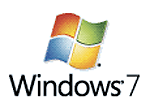 WinPatrol is a free tool you just must have on your Windows PC: It gives you a way to stop unwanted programs from loading (and tells you which apps are safe), watches out for spyware and keyloggers, keeps your System tray uncluttered, and when you boot, can get you to the desktop quickly.
WinPatrol is a free tool you just must have on your Windows PC: It gives you a way to stop unwanted programs from loading (and tells you which apps are safe), watches out for spyware and keyloggers, keeps your System tray uncluttered, and when you boot, can get you to the desktop quickly.
At its core, WinPatrol raises a flag when something suspicious happens within critical parts of your system. For instance, you’ll get an alert when anything is added to any of the Registry’s Startup locations and you’ll have the option of blocking it or disabling it later. WinPatrol watches almost 20 functions, including when a browser plug-in is added, a file type association is changed, a scheduled task is created, your HOST file is touched, or a new ActiveX component is installed.

 Here’s what I’m reading today:
Here’s what I’m reading today: How can you ensure that Windows 7 will run Windows XP applications? Make it run Windows XP. That’s the idea behind Windows XP Mode, a free download that Microsoft will make available to buyers of Windows 7 Professional, Enterprise, and Ultimate. (
How can you ensure that Windows 7 will run Windows XP applications? Make it run Windows XP. That’s the idea behind Windows XP Mode, a free download that Microsoft will make available to buyers of Windows 7 Professional, Enterprise, and Ultimate. (